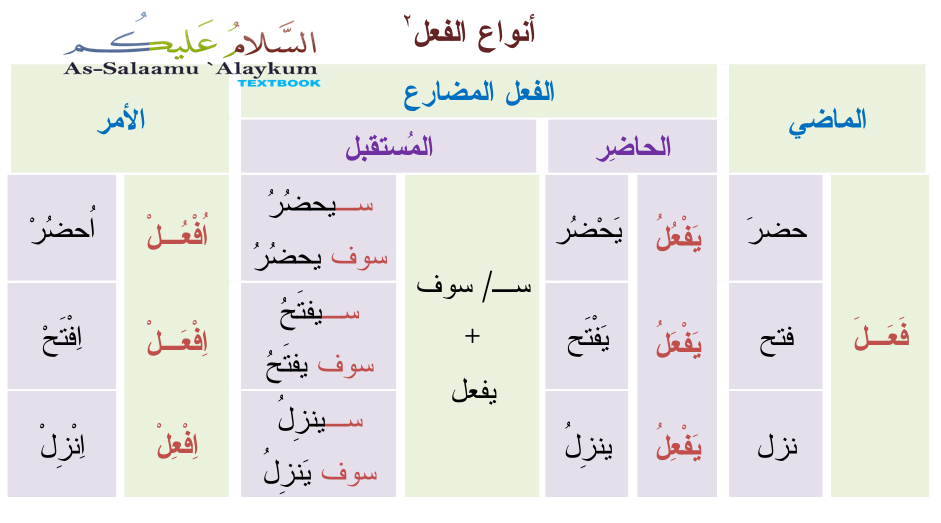The present tense in Arabic
There are two tenses in Arabic: the past tense (الماضي al-māḍī) and the present tense (المضارع al-muḍāriʻ). The future tense in Classical Arabic is formed by adding either the prefix سـ sa- or the separate word سوف sawfa onto the beginning of the present tense verb, e.g. سيكتب sa-yaktubu or سوف يكتب sawfa yaktubu ‘he will write’.
In some contexts, the tenses represent aspectual distinctions rather than tense distinctions. The usage of Arabic tenses is as follows:
• The past tense often (but not always) specifically has the meaning of a past perfective, i.e. it expresses the concept of ‘he did’ as opposed to ‘he was doing’. The latter can be expressed using the combination of the past tense of the verb كان kāna ‘to be’ with the present tense or active participle, e.g. كان يكتبُ kāna yaktubu or كان كاتبٌ kāna kātibun ‘he was writing’. there are some special verbs known as “compound verbs” that can express many grammatical aspects such as Inchoative, Durative etc., for example “badaa yulfitu nnazara” means “It started to attract attention” which “badaa” conveys the meaning of “to start doing something (in the past)”
• The two tenses can be used to express relative tense (or in an alternative view, grammatical aspect) when following other verbs in a serial verb construction. In such a construction, the present tense indicates time simultaneous with the main verb, while the past tense indicates time prior to the main verb. (Or alternatively, the present tense indicates the imperfective aspect while the past tense indicates the perfective aspect.)
In all but Form I, there is only one possible shape for each of the past and non-past stems for a given root. In Form I, however, different verbs have different shapes. Examples:
• كَتَبَ يَكْتُبُ kataba yaktubu ‘write’
• كَسِبَ يَكْسِبُ kasaba yaksibu ‘earn’
• قَرَأَ يَقْرَأُ qaraʼa yaqraʼu ‘read’
• قَدِمَ يَقْدَمُ qadima yaqdamu ‘turn’
• كَبُرَ يَكْبُرُ kabura yakburu ‘become big, grow up’
Notice that the second vowel can be any of a i u in both past and non-past stems. The vowel a occurs in most past stems, while i occurs in some (especiallyintransitive) and u occurs only in a few stative verbs (i.e. whose meaning is ‘be X’ or ‘become X’ where X is an adjective). The most common patterns are:
• past: a; non-past: u or i
• past: a, non-past: a (when the second or third root consonant is a “guttural,” i.e. one of ʼ ʻ h ḥ)
• past: i; non-past: a
• past: u; non-past: u

